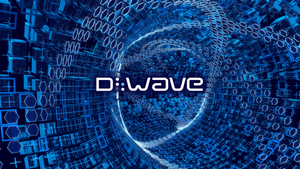
The cryptocurrency market in 2025 is undergoing a profound transformation, shedding its nascent image to emerge as a more mature and integrated component of the global financial landscape. This evolution is largely driven by a confluence of factors, including the significant impact of Spot Bitcoin and Ethereum Exchange-Traded Funds (ETFs), the burgeoning Real-World Asset (RWA) Tokenization sector, and the increasingly intertwined relationship between Artificial Intelligence (AI) and blockchain technology. These trends are not merely incremental changes but represent fundamental shifts that are attracting unprecedented institutional capital, redefining financial services, and setting the stage for a new era of digital finance.
The immediate implications of these developments are clear: increased liquidity, broader accessibility for traditional investors, and a legitimization of digital assets within established financial frameworks. As regulatory clarity improves and technological innovations mature, the crypto market is poised for sustained growth, albeit with inherent volatility. This period marks a critical juncture where digital assets are moving from the fringes to the mainstream, challenging conventional financial paradigms and creating new avenues for investment and economic activity.
The Institutional Floodgates Open: ETFs, RWAs, and AI's Ascendancy
The year 2025 has witnessed a dramatic acceleration in the institutional adoption of cryptocurrencies, primarily spearheaded by the success of Spot Bitcoin and Ethereum ETFs. Following their approval, Spot Bitcoin ETFs have become a magnet for capital, attracting tens of billions of dollars by mid-2025. Firms like BlackRock (NYSE: BLK) with its IBIT, which boasts over $55 billion in Assets Under Management (AUM), and Fidelity (NYSE: FNF) with its FBTC, holding approximately $20 billion, have led this charge. These ETFs offer a streamlined, regulated pathway for traditional investors to gain exposure to Bitcoin, directly influencing its supply and demand dynamics as inflows necessitate physical Bitcoin acquisition. Despite occasional significant outflows, such as an $812 million net outflow on August 1, 2025, institutional demand has largely remained robust, underscoring a sustained appetite for digital assets.
Spot Ethereum ETFs are mirroring this success, breaking records in July 2025 with $5.43 billion in net inflows, a staggering 369% increase from the previous month. This surge has propelled total net assets across all spot ETH ETFs to $21.52 billion, capturing nearly 5% of Ethereum's total market capitalization. The prospect of staking approval for US-listed Ether spot ETFs could further revolutionize the market, potentially offering attractive annualized returns and drawing substantial institutional money. This institutional embrace signifies a pivotal moment, transforming cryptocurrencies from speculative assets into legitimate components of diversified investment portfolios.
Parallel to the ETF boom, Real-World Asset (RWA) Tokenization has emerged as a transformative trend, bridging the chasm between traditional finance and blockchain networks. This process involves converting tangible assets—ranging from real estate and gold to bonds and stocks—into digital tokens on a blockchain. The market value of on-chain RWAs has already surpassed $12 billion, with projections from Boston Consulting Group (BCG) estimating a monumental rise to $16 trillion by 2030. Platforms such as Ondo Finance (CRYPTO: ONDO) and Maple Finance (CRYPTO: MPL) are at the forefront of this innovation, facilitating increased liquidity, fractional ownership, enhanced transparency, and 24/7 trading. The sector's explosive growth, surging 260% from $8.6 billion at the start of 2025 to over $23 billion, primarily driven by private credit and U.S. Treasury debt, injects a fresh source of reliable yields into on-chain financial ecosystems, addressing long-standing concerns about DeFi's sustainability.
Furthermore, the integration of Artificial Intelligence (AI) and cryptocurrency is moving beyond theoretical discussions to practical applications in 2025. This synergy aims to create more efficient, secure, and intelligent blockchain networks. AI-powered Decentralized Finance (DeFi) platforms are beginning to offer sophisticated trading strategies, advanced fraud detection, and optimized yield generation. AI agents, capable of autonomous financial transactions and decision-making, are leveraging crypto infrastructure for faster and cheaper payments, bypassing traditional banking complexities. The convergence of generative AI and blockchain technology is poised to revolutionize industries by enhancing security, transparency, and efficiency, with the combined market projected to exceed $2.7 billion by 2031.
Shifting Fortunes: Winners Emerge, Challenges Persist
The evolving crypto landscape in 2025 is creating clear winners and presenting new challenges for various stakeholders. Traditional asset managers who embraced Spot Bitcoin and Ethereum ETFs early, such as BlackRock (NYSE: BLK) and Fidelity (NYSE: FNF), are significant beneficiaries, capturing substantial market share and AUM. Their foresight in navigating regulatory hurdles and offering accessible crypto investment products has positioned them as leaders in the institutionalization of digital assets. Similarly, blockchain infrastructure providers and custodians supporting these ETFs are experiencing increased demand for their services.
Companies pioneering RWA tokenization, like Ondo Finance (CRYPTO: ONDO) and Maple Finance (CRYPTO: MPL), are also poised for substantial growth. By unlocking liquidity for illiquid assets and offering new investment opportunities, they are attracting both traditional investors seeking diversified portfolios and crypto natives looking for stable, yield-generating assets. The broader DeFi ecosystem, including lending protocols like Aave (CRYPTO: AAVE), Compound (CRYPTO: COMP), and MakerDAO (CRYPTO: MKR), stands to gain from increased institutional participation and the influx of tokenized real-world assets, which can provide more stable collateral and higher yield opportunities. MicroStrategy (NASDAQ: MSTR), a public company known for its aggressive Bitcoin accumulation strategy, continues to benefit from Bitcoin's resilience and price appreciation, solidifying its position as a major corporate holder.
On the other hand, traditional financial institutions that are slow to adapt to the digital asset revolution risk being left behind. Banks and brokerages that fail to integrate crypto services or offer competitive digital asset products may see their market share erode as investors gravitate towards more innovative and accessible platforms. While stablecoins are becoming fundamental to global finance, issuers facing stringent regulatory scrutiny or lacking robust reserves could face challenges. Furthermore, the highly speculative nature of many memecoins, particularly those without any underlying utility, continues to pose risks for retail investors, and a market shift towards utility-focused tokens could see purely speculative memecoins lose their allure. The increased institutionalization also means greater scrutiny and potential for market manipulation, requiring robust regulatory oversight.
Industry Transformation and Broader Implications
The current trends in the crypto market are not isolated events but integral parts of a broader industry transformation. The approval and success of Spot Bitcoin and Ethereum ETFs signify a critical step towards mainstream acceptance, integrating digital assets into the existing financial infrastructure. This move legitimizes cryptocurrencies as a distinct asset class, paving the way for further institutional products and services. The increased liquidity and accessibility brought by ETFs could also reduce volatility over the long term, as a wider pool of sophisticated investors enters the market.
RWA tokenization represents a profound shift in how assets are owned, traded, and managed. By fractionalizing ownership and enabling 24/7 trading, it democratizes access to traditionally illiquid assets like real estate and private equity. This trend has the potential to disrupt established financial intermediaries, reduce transaction costs, and enhance transparency across various asset classes. The integration of AI with crypto is set to revolutionize everything from trading algorithms and cybersecurity to decentralized autonomous organizations (DAOs), making blockchain networks more efficient, secure, and intelligent. This convergence could lead to entirely new business models and applications that are currently unimaginable.
Regulatory developments are playing a crucial role in shaping these trends. The EU's Markets in Crypto-Assets (MiCA) regulation is providing a comprehensive framework for stablecoins and other crypto assets, fostering greater confidence and adoption globally. In the U.S., legislative efforts like the proposed BITCOIN Act of 2025 (S.954), aiming to formalize a Strategic Bitcoin Reserve, underscore a growing recognition of Bitcoin's strategic importance. Historically, the introduction of new financial instruments, such as commodity ETFs, has often led to significant market expansion and increased participation, a pattern now being observed with crypto ETFs. These regulatory and legislative advancements are crucial for providing the necessary legal certainty and investor protection to support continued growth and innovation.
The Road Ahead: Opportunities and Challenges
Looking ahead, the crypto market in 2025 and beyond presents a landscape of both immense opportunities and significant challenges. In the short term, continued inflows into Spot Bitcoin and Ethereum ETFs are expected, potentially driving further price appreciation for these foundational assets. The maturation of RWA tokenization platforms will likely see a wider array of assets brought on-chain, attracting more institutional capital and creating new yield opportunities within DeFi. The integration of AI will continue to enhance the efficiency and security of blockchain networks, leading to more sophisticated decentralized applications.
Long-term possibilities include the widespread adoption of stablecoins for everyday transactions, potentially challenging traditional payment networks. The convergence of AI and blockchain could lead to fully autonomous financial systems and decentralized AI agents, revolutionizing industries far beyond finance. Strategic pivots for market participants will involve adapting to evolving regulatory frameworks, investing in robust security infrastructure, and focusing on utility-driven innovation rather than pure speculation.
Market opportunities will emerge in areas such as specialized RWA tokenization platforms, AI-powered DeFi protocols, and cross-chain interoperability solutions. Challenges include navigating regulatory uncertainties, managing market volatility, and addressing scalability issues within blockchain networks. Potential scenarios range from a continued bull market driven by institutional adoption and technological innovation to periods of consolidation and correction as the market digests rapid growth. Investors should watch for further regulatory clarity, the development of new institutional products, and the real-world utility of emerging blockchain applications. Bitcoin's resilience, coupled with various price predictions ranging from $130,000 to $250,000 by the end of 2025, suggests a bullish long-term outlook, though short-term corrections remain a possibility.
Conclusion: A New Era for Digital Finance
The crypto market in 2025 stands at a pivotal juncture, characterized by unprecedented institutional integration, groundbreaking technological advancements, and a maturing regulatory environment. The profound impact of Spot Bitcoin and Ethereum ETFs has democratized access for traditional investors, while the rise of Real-World Asset Tokenization is bridging the gap between conventional finance and blockchain, unlocking new avenues for liquidity and investment. The symbiotic relationship between AI and crypto is poised to redefine efficiency, security, and utility across decentralized networks.
The key takeaway from this period is the undeniable shift of digital assets from a niche, speculative realm to a legitimate and increasingly integrated component of the global financial system. While volatility remains an inherent characteristic, the underlying trends of institutional adoption, technological innovation, and regulatory clarity paint a picture of sustained growth and evolution. Investors should closely monitor regulatory developments, the continued flow of institutional capital, and the emergence of real-world applications for blockchain technology. The resilience of Bitcoin and the expanding utility of stablecoins and tokenized assets underscore a future where digital finance plays an increasingly central role, offering both significant opportunities and the imperative for informed navigation. The coming months will be crucial in solidifying these trends and shaping the lasting impact of this transformative era.






